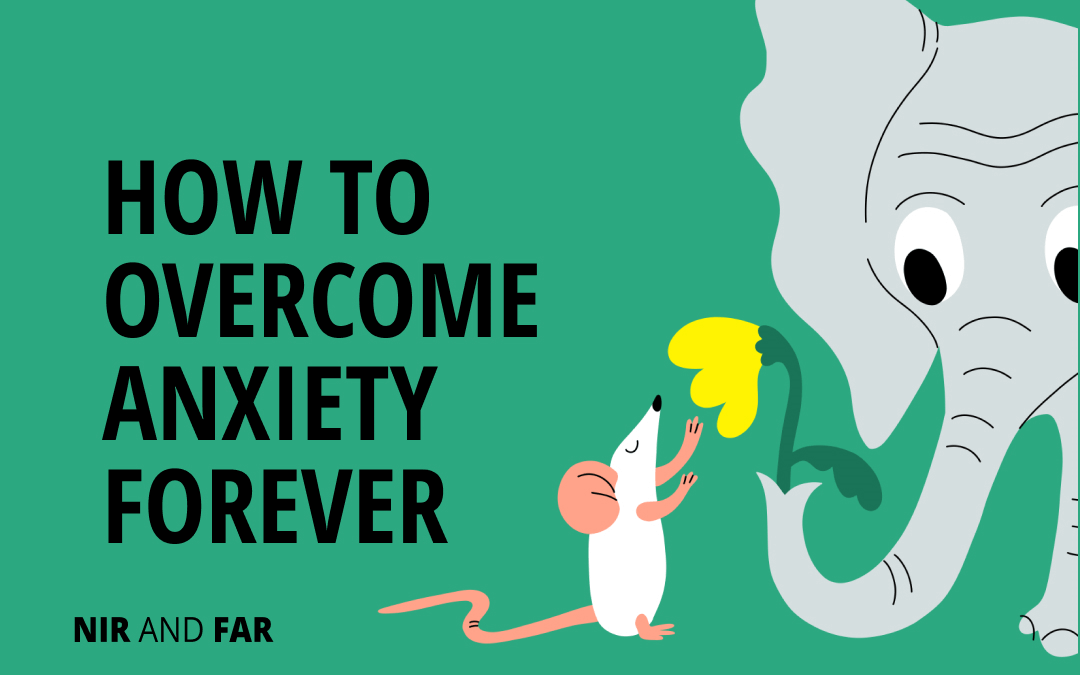Experiencing fear without harm lessens feelings of anxiety.
Nir’s Note: The following essay is adapted from a chapter in Get Better at Anything: 12 Maxims for Mastery by Scott Young. Scott is the author of Ultralearning and a TedX speaker renowned for his “MIT Challenge,” where he learned 4 year’s worth of college-level computer science in just 12 months..
On the eve of the Second World War, as conflict with Germany appeared inevitable, leaders in Britain seemed sure of two things:
- Advancements in aircraft technology meant planes would drop bombs on major populated centers on a scale far beyond what had been seen in the previous great war.
- The terror of nightly bombing raids would inflict far greater psychological damage than physical casualties.
Winston Churchill predicted three to four million people might be forced to flee metropolitan centers after the first bombing raids. Tens of thousands of police officers were requested to prevent the stampeding exodus from trampling one another. A group of esteemed psychologists estimated psychological casualties would exceed physical injuries three-to-one.
This expert consensus was expressed best when the director of a London medical clinic said it was, “clear to everyone that there must be an immediate inundation with cases of neurosis on the declaration of war—and certainly after the first air raid.”1Quotes and figures drawn from Richard Morris Titmuss’s Problems of Social Policy.
Yet these predictions were wrong.
As the psychologist Stanley Rachman summarizes in his book, Fear and Courage, “[t]o the considerable surprise of almost everyone, the psychological casualties were few, despite the death and destruction caused by the attacks.”
Of the 578 casualties documented in one hospital after a bombing raid, only two were suffering primarily from psychological symptoms. In another, only fifteen of 1100 patients of a medical clinic showed obvious signs of psychological disorders.2Vernon, P. E. (1941). Psychological effects of air-raids. The Journal of Abnormal and Social Psychology, 36(4), 457–476. https://doi.org/10.1037/h0059562 Reflecting on the experience, psychologist Irving Janis wrote, “One point emerges very clearly … there was a definite decline in overt fear reactions as the air blitz continued, even though raids became heavier and more destructive.”3In Janis, Air War and Emotional Stress
Perhaps the sentiment was captured best by Mollie Panter-Downes in her London War Notes:
“The calm behavior of the average individual continues to be amazing. Commuting suburbanites, who up to yesterday had experienced worse bombardments than people living in Central London, placidly bragged to fellow passengers on the morning trains about the size of bomb craters in their neighborhoods, as in a more peaceful summer they would have bragged about their roses and squash.”
While the bombings were catastrophic and deadly, most people, most of the time, emerged unscathed. Air raid sirens and explosions may have been heard in the distance, but the majority of the population was not directly injured in any particular bombing run. Repeated exposure transformed the hypothetical terror of falling bombs into a devastating, but not panic-inducing, reality.
The Principle of Exposure
The events of the Blitz reveal an important lesson about the psychology of fear:
Exposure to fear, without directly experiencing harm, tends to reduce the experience of anxiety.
Fear looms large in many of our efforts at self-improvement. We want to be charismatic speakers, but our hearts race when we get up to the stage. We want to learn a new language, but we worry about making a mistake when speaking to a stranger. We want to start a company, switch firms, or take on a new role, but our anxieties hold us back.
There are two broad lessons we can apply from the principle of exposure:
The first is that we tend to underrate the ability for once-terrifying things to become utterly normal with repeated experience.
The second is that because the natural reaction to anxiety is to avoid the things you’re afraid of, feelings of fear can become self-sustaining.
Avoidance behaviors are anything you do to prevent a feared situation from occurring. This can include literally avoiding the scary situation—procrastinating on anxiety-inducing work, skipping out on the big presentation, or passing up on the job interview. But it also includes actions to neutralize a threat, such as washing your hands obsessively if you’re afraid of germs.
Most of the time, avoidance behaviors are healthy and useful. If you’re worried about failing an important exam and your response is to study a lot, that’s probably a successful action. Similarly, taking ordinary precautions from real dangers is sensible, not cowardly.
Avoidance behaviors run into trouble when they are impotent or excessive in the face of actual danger. Avoiding feelings of fear prevents the unconscious threat-detection circuitry of your brain from adjusting its estimate of the real danger. Exposure can’t work if you avoid testing your fears.
Free Distraction Tracker
Reclaim control of your attention today.
Your email address is safe. I don't do the spam thing. Unsubscribe anytime. Privacy Policy.

How to Overcome Fears and Anxieties
The principle of exposure has been used for decades to treat a wide variety of anxiety-based disorders successfully. It has been shown to be effective in treating social anxieties, panic disorder, phobias, generalized anxiety, obsessive-compulsive disorder, and even post-traumatic stress disorder.4 Exposure Therapy for Anxiety by Jonathan S. Abramowitz, Brett J. Deacon, and Stephen Whiteside
A common feature of many therapies using exposure is constructing a fear hierarchy: an ordered list of fears, starting from the mildly unpleasant to the downright terrifying. By working through them one by one on the list, the continued exposures reduce fear, making the further steps on the ladder easier to push yourself to do.
Exposure works, but it isn’t a cure. Evidence suggests that the neural circuitry responsible for threat detection is separate from the safety associations built through exposure.5Anxious by Joseph LeDoux Exposure suppresses fear, but this learning tends to be more fragile and constrained than the original fear learning. As a result, for exposure to last, it helps to apply it in a wide variety of situations and contexts and to refresh the exposure periodically.
For instance, if you have a long-held fear of public speaking, it’s not enough to overcome that fear through an intensive burst of Toastmasters meetings–you may need to speak in various situations and ensure you don’t go long periods of time without giving any speeches.
Exposure doesn’t mean denying your fears but simply testing them. Britons may have habituated to constant air raids, but their intrinsic danger didn’t diminish. It was simply that, through exposure, citizens could respond to the very real dangers in appropriate ways by protecting themselves when they could and avoiding panic when they could not.
Courage is not acting without fear but the willingness to venture forward in spite of it.
Related Articles
- Schedule Maker: a Google Sheet to Plan Your Week
- Habit Tracker Template in Google Sheets
- The Ultimate Core Values List: Your Guide to Personal Growth
- Timeboxing: Why It Works and How to Get Started in 2025
- An Illustrated Guide to the 4 Types of Liars
- Hyperbolic Discounting: Why You Make Terrible Life Choices
- Happiness Hack: This One Ritual Made Me Much Happier
References

